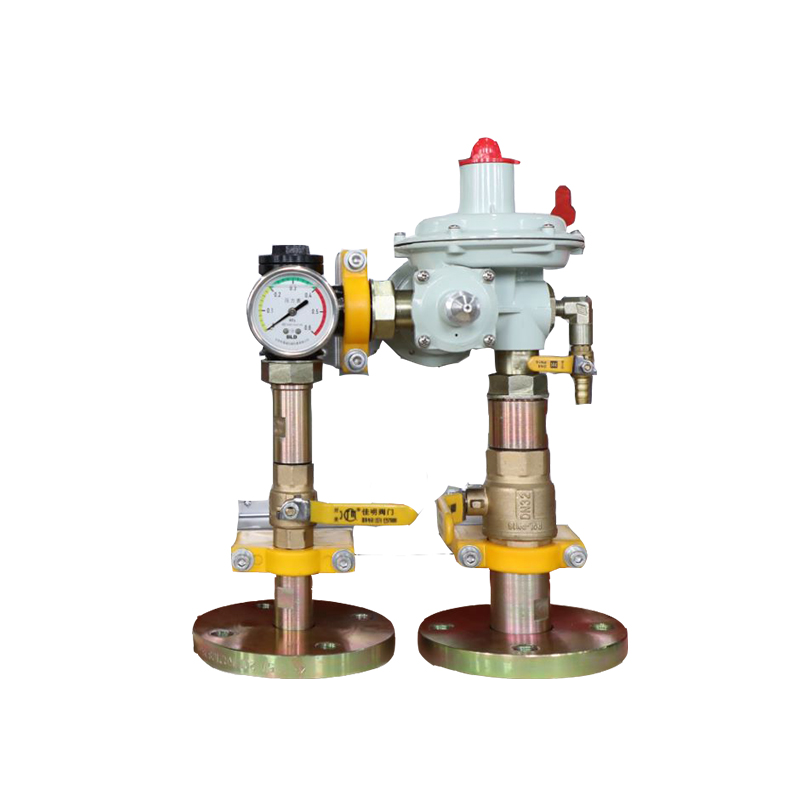
8 月 . 12, 2024 10:42
Back to list
Understanding the Functionality and Importance of High Pressure Regulators in Various Applications
Understanding High Pressure Regulators A Comprehensive Overview
High pressure regulators are crucial components in various industrial applications, particularly in sectors such as gas supply, chemical processing, and manufacturing. These devices are designed to control and reduce high-pressure gas or liquid to a lower and more manageable pressure, ensuring safety and efficiency in various operations.
Functionality
At their core, high pressure regulators serve to maintain a steady output pressure despite fluctuations in the input pressure. When high-pressure gas enters the regulator, it passes through a series of internal mechanisms that modulate the pressure to a predetermined level. This process is vital as it prevents damage to downstream equipment and ensures that operations function within safe parameters. Common applications include welding, where precise gas mixtures are essential, and in the medical field, where unsafe pressure levels can jeopardize equipment functionality and patient safety.
Design and Components
High pressure regulators typically consist of several key components the body, inlet and outlet ports, a pressure reducing mechanism, and a pressure gauge. The body is constructed from robust materials such as brass or stainless steel to withstand high pressures and ensure durability. The inlet port is where the high-pressure gas enters, while the outlet port allows the regulated gas to flow to its intended application.
One of the most critical components is the pressure reducing mechanism, which often includes a diaphragm or piston. This component works to compress a spring or use a diaphragm to balance the forces, allowing accurate pressure control. A pressure gauge is usually included with the setup to provide real-time feedback on the output pressure, enabling operators to monitor the system effectively.
Types of High Pressure Regulators
There are several types of high pressure regulators, each designed for specific applications. The most common types include
high pressure regulators

1. Single-stage Regulators These are generally used for applications where the inlet pressure is relatively constant. They offer simplicity and are typically less expensive but may not provide precise control under varying inlet conditions.
2. Two-stage Regulators For more critical applications, two-stage regulators are preferred. They consist of two separate pressure-reducing mechanisms that help in more stable output, even when there are significant changes in inlet pressure.
3. Built-in Safety Features Many modern high pressure regulators come equipped with safety features like relief valves, burst disc protection, and emergency shut-off mechanisms to ensure safe operation.
Applications and Importance
The importance of high pressure regulators cannot be overstated. In the gas industry, these regulators help maintain the pressure of natural gas supplies to homes and enterprises, preventing leaks and ensuring safety. In laboratories, they are essential for controlling gases used in experiments, preventing hazardous reactions caused by excess pressure.
In manufacturing, high pressure regulators contribute to the efficiency of processes such as painting, soldering, and cutting by providing consistent gas flow at required pressures. Their role is equally significant in the medical field, where they regulate gases such as oxygen and nitrous oxide for patients, ensuring accurate and safe delivery.
Conclusion
In conclusion, high pressure regulators play a vital role in numerous industries by ensuring that high-pressure gases are safely and effectively reduced to manageable levels. Their design, functionality, and application are tailored to meet varying needs, thereby enhancing safety and operational efficiency. As technological advancements continue, we can expect even greater precision and reliability in high pressure regulation, critical for supporting the evolving demands of modern industries.
Latest news
-
Unlocking The Quality Gas Pressure ReducersNewsNov.01,2024
-
The Role of Gas Pressure Reducing StationsNewsNov.01,2024
-
The Importance and Functionality of Safety Relief ValvesNewsNov.01,2024
-
The Essential Role of Safety Valves in Natural Gas ApplicationsNewsNov.01,2024
-
The Essential Role of Gas Pressure RegulatorsNewsNov.01,2024
-
Enhance Your Premium Gas FiltersNewsNov.01,2024

